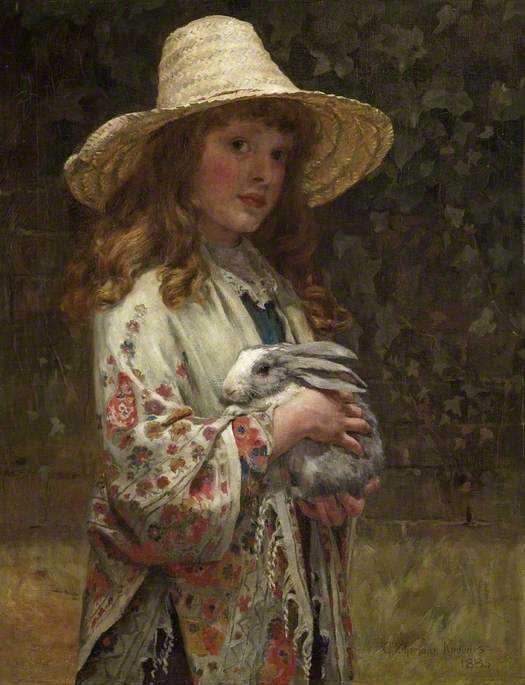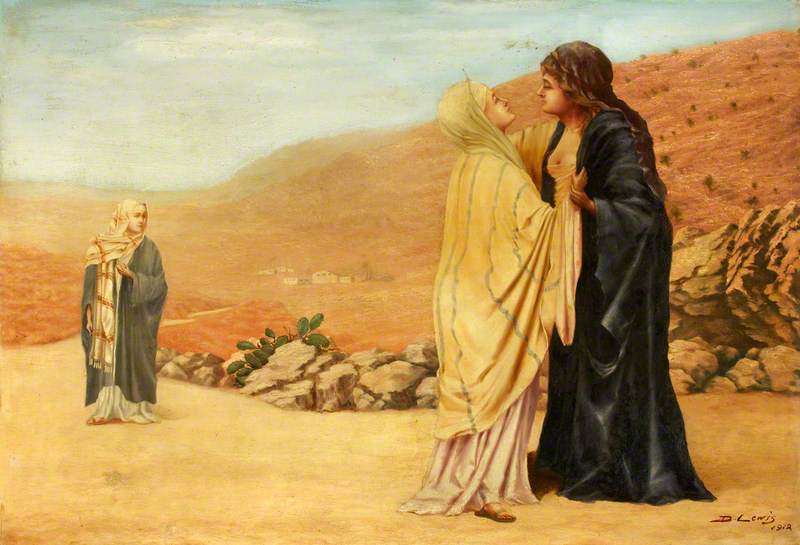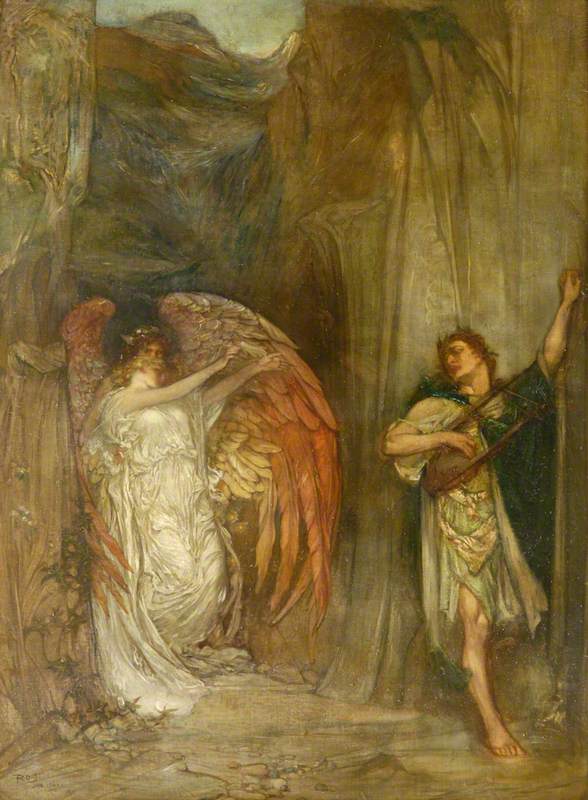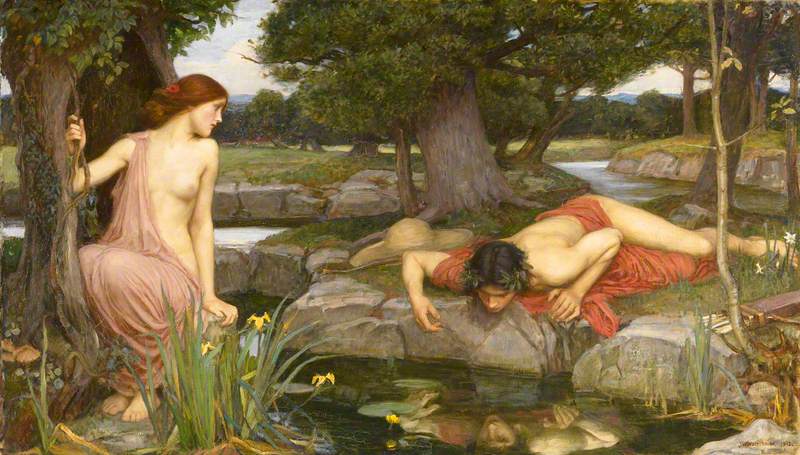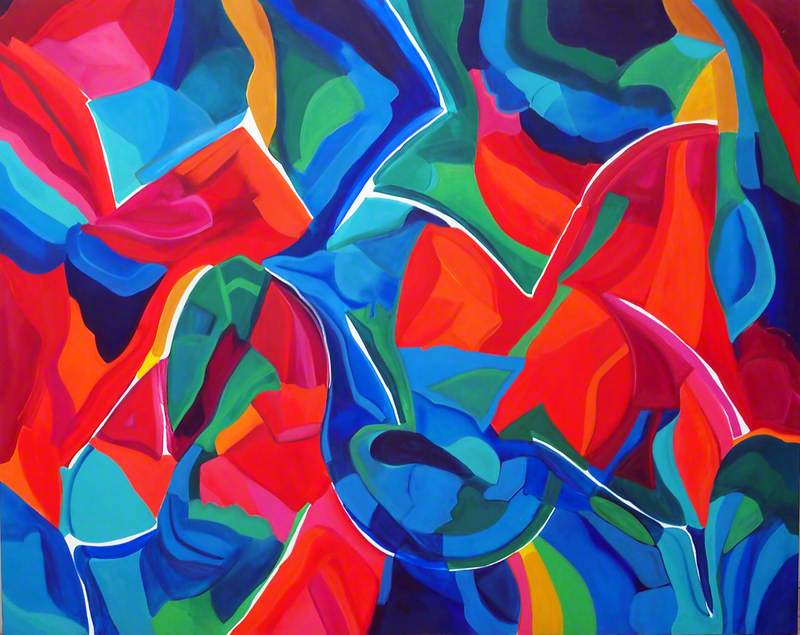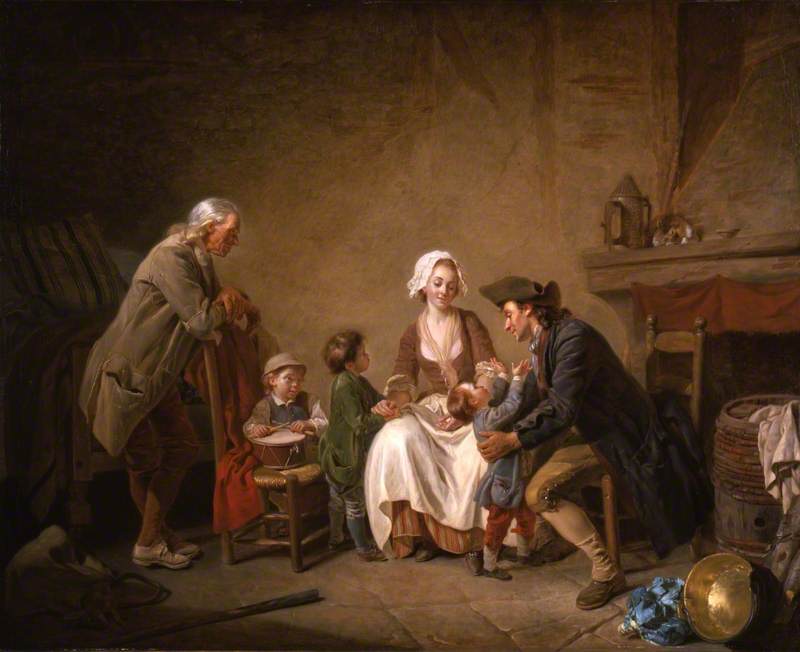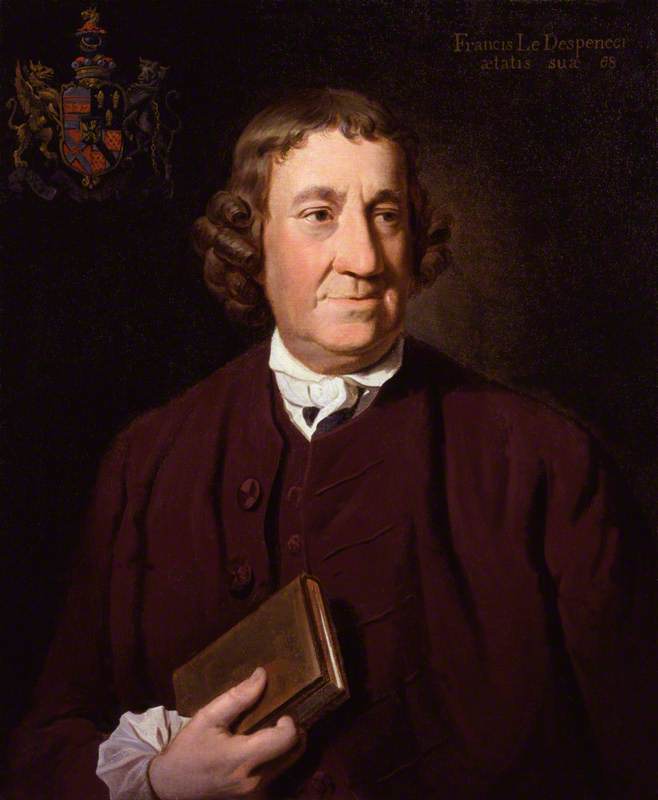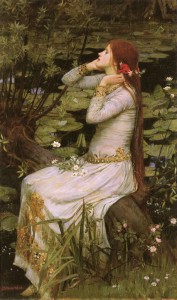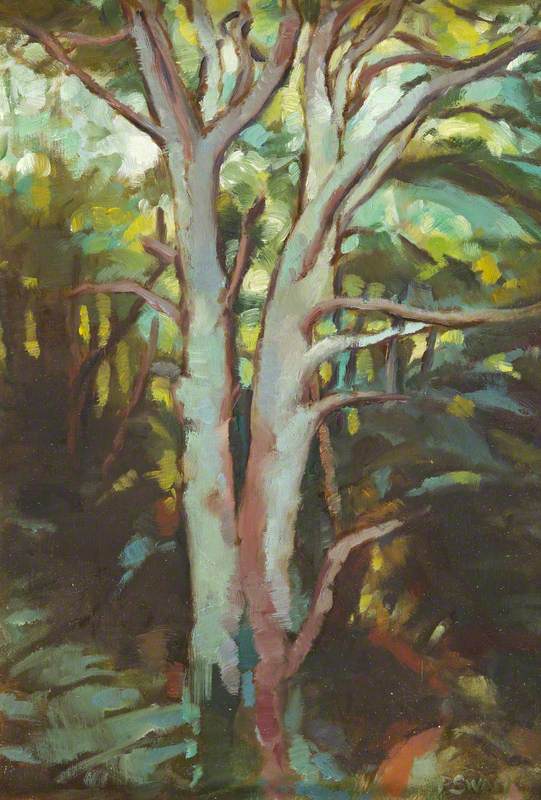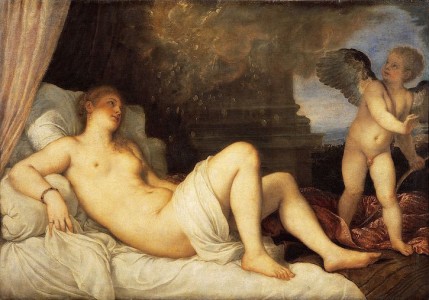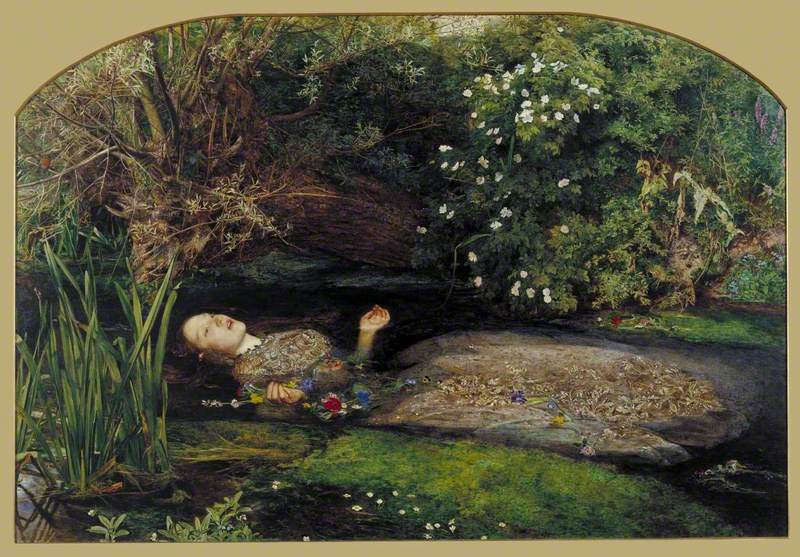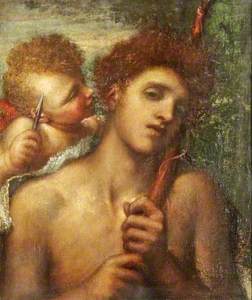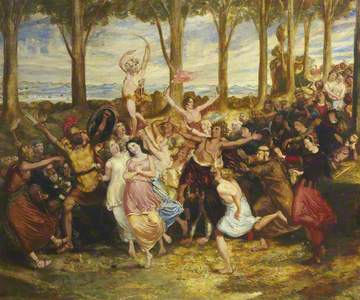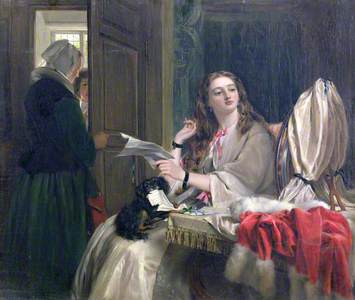I've spent some time looking at love through the prism of paintings. It has revealed how artists throughout the ages have captured love, in its many shades, both its pleasures and its pains, as well as the very many varieties of love – from the romantic to the platonic.
Paintings are filled with the traditional symbols and imagery of love, from Cupid to hearts to red roses galore, but there are also some more unusual expressions.
From the beginnings of love to its end, artists have captured both love that is fleeting and love lasting. The first flush of love – in all its forms – graces paintings such as The Dawn of Love, First Love, Her First Love, Love at First Sight and The First Whisper of Love.
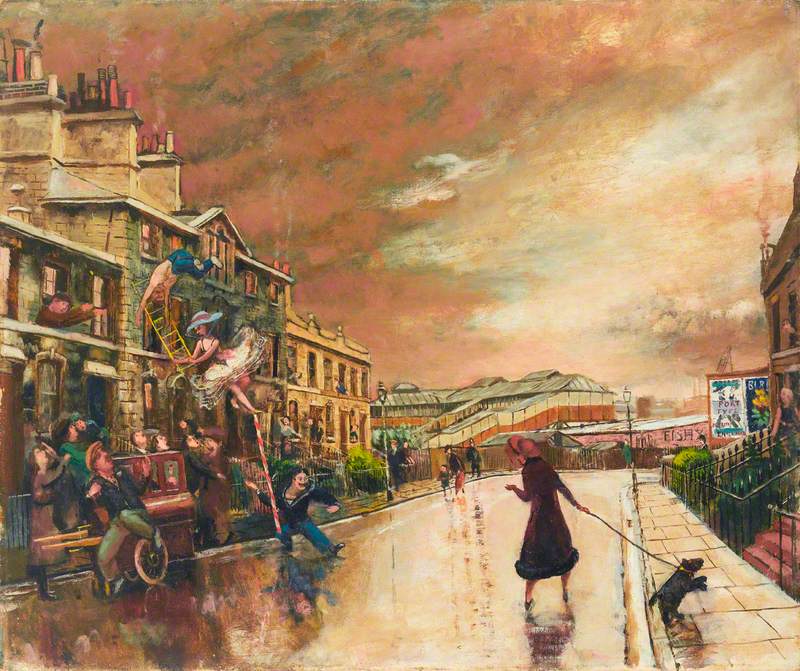
© the artist's estate / Bridgeman Images. Image credit: Arts Council Collection, Southbank Centre, London
Carel Victor Morlais Weight (1908–1997)
Arts Council Collection, Southbank CentreBut love, like life, can be transient – indeed so transient that one painting is called Love Lost as Soon as Won and in one Love Flies Out of the Window.
Echoing the advice to 'gather ye rosebuds while ye may' is the painting Gather the rose of love while yet tis time.

Image credit: Birmingham Museums Trust
'Gather the rose of love while yet 'tis time' 1848
William Etty (1787–1849)
Birmingham Museums TrustAs the great artists well knew, The course of true love never runs smooth and many paintings depict love gone awry.
There is Sickly Sweet Love.
There is Love Betrayed.
There is Disappointed Love.
There is Amore on the Rocks.
But there is also hope that what has been damaged may be healed, such as Lost Love Found.
In some art, against all the odds, love lasts – indeed, triumphs – such as in the uplifting sights of Love Triumphant and The Triumph of Love.
Such is its power that love is personified in Love Steering the Boat of Humanity, by George Frederic Watts, the same artist of Love and Life and Love and Death.

Image credit: Watts Gallery – Artists' Village
Love Steering the Boat of Humanity 1899–1901
George Frederic Watts (1817–1904)
Watts Gallery – Artists' Village
Love has long been portrayed in myth and literature and many such love stories and mythical figures of love find their way into art.
Cupid has been depicted throughout the ages, from Cupid Inspiring the Plants With Love to more modern depictions, such as this Cupid (after Bronzino).
There are paintings devoted to mythical figures such as Erato, the Muse of Lyric and Love Poetry.

Image credit: National Trust Images
Erato, the Muse of Lyric and Love Poetry c.1800
Italian (Lombard) School (possibly)
National Trust, Anglesey AbbeyOne of my favourite love myths is that of Orpheus and Eurydice. Paintings capture the story, from its beginning – such as in Orpheus: The Wooing of Eurydice – to its tragic ending.

© the artist's estate. Image credit: Music Hall Aberdeen
Orpheus: The Wooing of Eurydice (after Douglas Strachan) 1949
Hugh Adam Crawford (1898–1982)
Music Hall AberdeenIn the story, Orpheus loses his love, Eurydice, when she is bitten by a snake. He goes to the Underworld to get her back. Orpheus' talent for making beautiful music means he is given permission to take Eurydice back to the mortal realm – as long as he walks away and does not look back. Doubting that Eurydice is following him, Orpheus turns and looks at the last minute – and so loses his love forever – as shown in Orpheus leaving Eurydice.
There are numerous artworks depicting the lovers Hero and Leander, and the Biblical Samson and Delilah. And of course, those most famous of star-crossed lovers: Romeo and Juliet.
Some love myths have a moral for us, such as that of Narcissus, fatally in love with his own image. He eventually wastes away, having fallen deeply in love with 'all the things for which he himself is admired'. His story is told in various paintings, such as Echo and Narcissus.
There is love all around the world, from Love on the Costa del Sol to Curacao Lovers.
There is love at great heights – Alpine Love – and love at depths – The Valley of Love, Hendon, Sunderland.
Love also seems to make its own place, such as in the surreal Forest of Love.
Love is depicted in times of tranquility to times of chaos, from Love in Idleness to Love Among the Ruins.
There is Love in the Mist (the name of the flower Nigella damascena) and the suggestion of place in Isn't it Romantic.
And of course, there is love In the Bedroom.
Indeed, the erotic is depicted in paintings from The Pursuit of Pleasure to Love Birds by Roberta Green, and The Lovers by Eric Seeley.

© the artist. Image credit: Milton Keynes Hospital NHS Foundation Trust (managed by Arts for Health – Milton Keynes)
Eric Seeley (b.1951)
Milton Keynes Hospital NHS Foundation Trust (managed by Arts for Health – Milton Keynes)There is not only romantic and sexual love on display but a whole array of other forms of love by turns joyful and sorrowful. There is Paternal Love.
There is Maternal Love (Sorrow) and somewhat happier, Mater et Filius.

Image credit: Nottingham City Museums & Galleries
Albertus Johan Neuhuys (1844–1914)
Nottingham City Museums & Galleries
There is Filial Love.
There is Friendship.
There is Love among the Nations.
How to express love? There are many paintings of love letters (from Her First Love Letter to Love Letter to a Valentine's message evident in St Valentine's Morn).
But other paintings capture the complexities of depicting this state, such as The Language of Love.
The dove has long been associated with love, as well as peace, and it flutters throughout paintings, including Emblems of Love.
There is also, of course, the symbol of lovebirds such as in Girl With Lovebirds.
Animals are not only limited to being symbols of human love but love in their own right, too. One of my favourite love paintings is the bright The Capercaillie Sings His Lovesong, which depicts a bird at the piano.
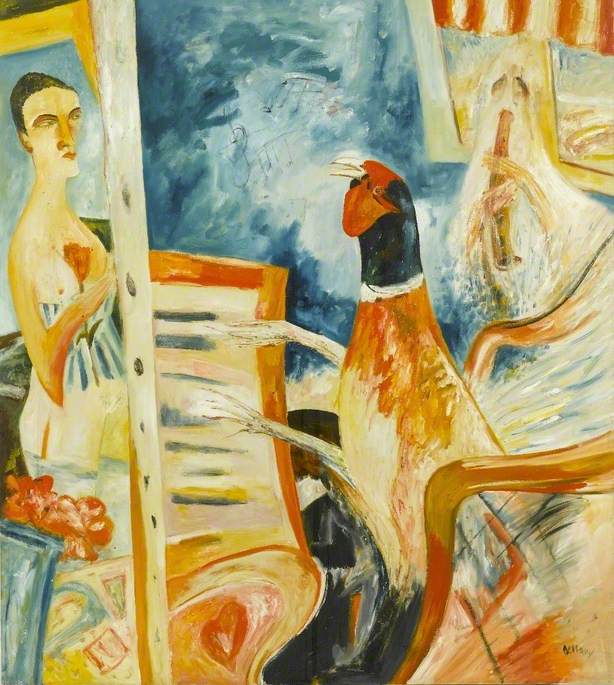
© the artist's estate / Bridgeman Images. Image credit: Arts Council Collection, Southbank Centre, London
The Capercaillie Sings His Lovesong 1985
John Bellany (1942–2013)
Arts Council Collection, Southbank CentreThere is The Lion in Love and The Love of the Red Swans.
There is love not only of people, but of places. There is love of and in the inanimate world, too, such as in the intriguing painting, The Loves of the Plants.
So much passion is in these paintings that they reveal not only the art of love, but the love of art.
Anita Sethi, journalist, writer and critic


